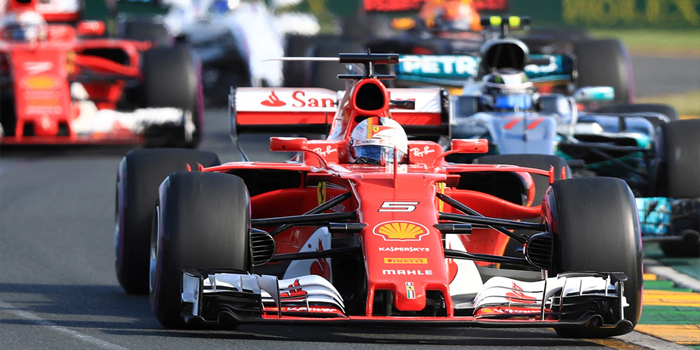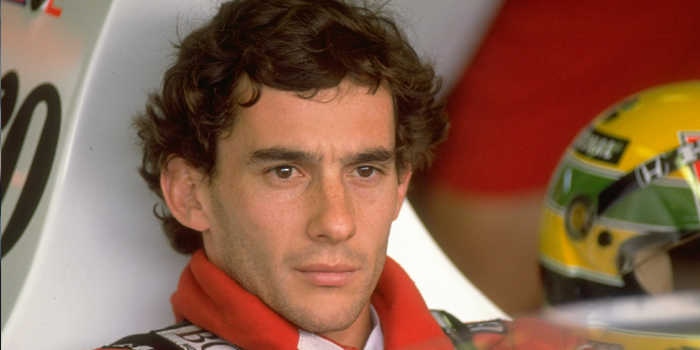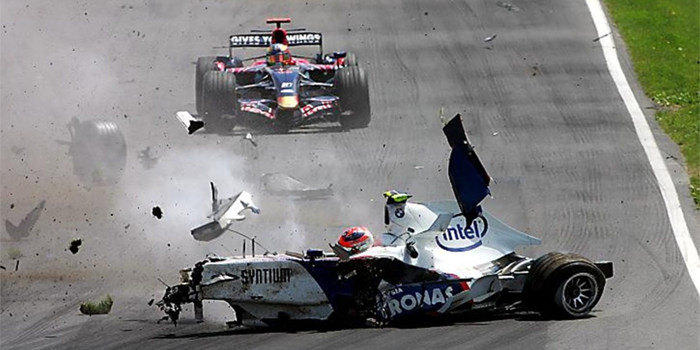Formula One remains one of the most dangerous and expensive sports out there and attracts millions in sponsorship each year. We have been digging into this exhilarating motorsport and have found 25 incredible Formula 1 facts you probably didn’t know.
FORMULA 1 CAR FACTS

- The onboard cameras on F1 cars are coloured differently to distinguish between 2 members of the same team
- Small planes are able to take off at slower speeds than F1 cars reach during a race.
- An F1 engine usually revs up to 18,000 rpm.
- The average basic cost for an F1 car is 6.8M USD.
- Once a race has finished an F1 car’s tyres will still be hot enough to cook an egg on.
FORMULA 1 DRIVER FACTS

- Formula 1 cars have a minimum allowable weight (including the driver).
- On average a Formula One driver loses 4 kilos of weight during a Grand Prix race.
- Every entering F1 driver with the surname of ‘Hill’ has won a championship (Graham, Damon and Phil).
- The only female driver to ever score a point in Formula 1 was Lella Lombardi (Italian) who scored a half point by placing 6th in the Spanish Grand Prix in 1975.
- Because of the training required to deal with the g-forces involved in Formula 1 driving, F1 drivers tend to have disproportionately thick necks.
FORMULA 1 CHAMPIONSHIP FACTS

- Queen Elizabeth II attended the very first Formula 1 race in 1950 with her father King George VI and sister Princess Margaret.
- The country with the most F1 Championship winning drivers is the UK with 10 drivers.
- Since the first Formula One Championship in 1950, 69 countries have hosted a Grand Prix.
- The 1958 Formula 1 Championship experienced the most driver fatalities with four drivers losing their lives in track accidents.
- In 1953, 34 cars lined up for the German Grand Prix making it the busiest Formula One race ever.
FORMULA 1 CIRCUIT FACTS

- Manhole covers have to be welded down before the Monaco Grand Prix because the downforce created by an F1 car has enough suction to pull them up.
- The Italian circuit at Monza is particularly hard on F1 brakes. At the first corner drivers take just 2 seconds to decrease speed from 200 mph to 60 mph.
- The Marina Bay Street Circuit in Singapore is raced at night and has nearly 1,500 lighting projectors to project the light from 2,000-watt white metal halide lamps.
Now that you know a little bit more about the intense sport of Formula 1, make sure to place your bets on any race or outright for the season at
Betway Naija

- Monaco is the shortest Formula One circuit at only 3,340 kilometres. This means that it has the highest number of laps at 78.
- The Nurburgring track in Germany was built to help provide employment for workers in the area. It took 25,000 people from 1925 to 1927 to construct.
FORMULA 1 SAFETY FACTS

- F1 helmets can stand flames of 800° centigrade for at least 45 seconds.
- Most F1 car tyres are filled with nitrogen because it has a more consistent air pressure than normal air.
- All F1 cars have a circuit breaker fitted inside the car so that in the event of a crash the driver can cut all of the main electrical circuits.
- Drivers have to demonstrate the effectiveness of their car’s two compulsory mirrors by reading number and letter boards at different distances behind the cockpit.
- Should it be required, a safety car contains two people. An experienced circuit driver and an FIA observer who maintains contact with race control.
You might also like: 12 Facts about the World Cup every Nigerian should know
For all the latest sports news, betting tips and promotions follow
Betway on
Facebook, Twitter,
Instagram and
YouTube.
Download the Betway App.